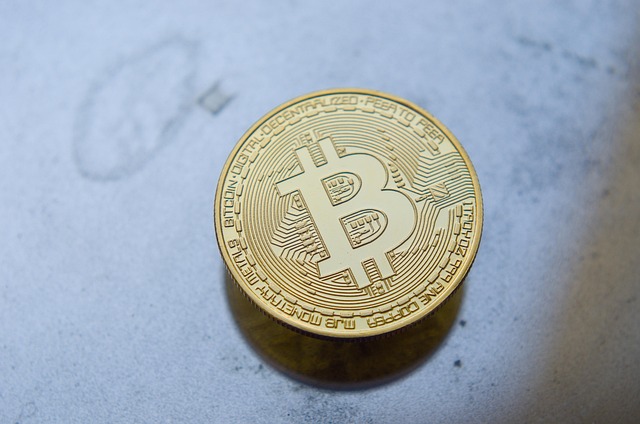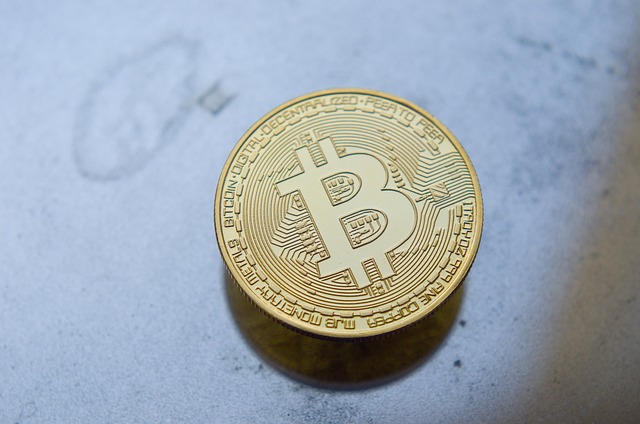Fastest Futures Trading Platform in 2025
Author: Jameson Richman Expert
Published On: 2025-08-01
Prepared by Jameson Richman and our team of experts with over a decade of experience in cryptocurrency and digital asset analysis. Learn more about us.
In the rapidly evolving world of financial markets, identifying the fastest futures trading platform is essential for traders seeking to maximize profits and minimize latency. As high-frequency trading (HFT), algorithmic strategies, and machine learning-driven automation become increasingly prevalent, the importance of ultra-low latency infrastructure and lightning-fast execution speeds cannot be overstated. The competitive edge in futures markets hinges on the ability to execute trades within microseconds, making platform selection a critical decision for professional traders, hedge funds, and institutional investors alike. This article delves into the technological, infrastructural, and strategic factors that define the fastest futures trading platforms in 2025, providing an in-depth analysis of current leaders, emerging innovations, and future trends shaping the landscape of trading speed.

Understanding the Critical Factors for Speed in Futures Trading Platforms
Achieving top-tier performance in futures trading involves several technical and infrastructural components that collectively determine a platform’s latency, reliability, and overall trading efficiency. These include:
- Latency: The core metric measuring the delay from order submission to execution. Reducing latency involves deploying geographically proximate data centers (colocation), optimizing network routes through dedicated fiber optics, and utilizing high-performance matching engines. Microsecond and even nanosecond-level latency can significantly influence trading outcomes, especially during high-volatility periods or rapid market moves.
- Order Matching Engine: The engine is the beating heart of the trading platform. Modern engines employ multi-threaded, distributed architectures, real-time data synchronization, in-memory processing, and parallel execution to facilitate rapid, reliable matching under high load conditions. Innovations such as deterministic matching algorithms, which process orders in fixed, predictable time frames, reduce processing delays further.
- Liquidity Pools and Market Depth: Deep liquidity pools, aggregated across multiple sources including centralized exchanges, dark pools, and OTC markets, enable traders to execute large orders with minimal slippage and market impact. High liquidity ensures rapid fill rates, especially critical for algorithmic and HFT strategies aiming for precise execution timing.
- Infrastructure & Connectivity: Dedicated colocation within exchange data centers, fiber-optic connections, and optimized routing protocols such as MPLS (Multiprotocol Label Switching), SD-WAN, or private dedicated networks are fundamental. These reduce data transmission times, minimize jitter, and ensure consistent, predictable performance. Advanced network topology designs, including redundant pathways, further mitigate data loss during peak market hours.
- Security & System Stability: Ultra-fast trading platforms must maintain high security standards against threats like DDoS attacks, hacking, and system failures. Redundant architectures, real-time monitoring dashboards, and disaster recovery protocols ensure uninterrupted operation, especially during critical market events. The integration of hardware firewalls, intrusion detection systems, and continuous penetration testing fortifies the platform’s resilience.
Top Futures Trading Platforms Leading the Speed Race in 2025
Based on technological advancements, infrastructural investments, independent speed tests, and user feedback, the following platforms exemplify the cutting edge of trading speed in 2025. They leverage sophisticated hardware, innovative network solutions, and advanced trading protocols to provide traders with a decisive speed advantage:
1. Binance Futures
Binance Futures continues to lead with its proprietary high-speed matching engine, capable of processing millions of transactions per second. Its globally distributed network of data centers in strategic locations such as Singapore, London, and Chicago ensures proximity to major liquidity hubs, reducing transit times. The platform supports advanced order types such as Immediate-Or-Cancel (IOC), Post-Only, and Stop-Limit, vital for HFT and arbitrage strategies. Its API infrastructure, optimized for ultra-low latency, leverages WebSocket streams, FIX protocols, and REST endpoints, with dedicated bandwidth prioritization. Binance’s extensive liquidity pools across derivatives markets enable rapid execution with minimal slippage, critical during volatile trading sessions, especially in high-volume periods like market opens or releases of macroeconomic data.
Register on Binance to experience their state-of-the-art speed infrastructure firsthand.2. MEXC Global
MEXC has invested heavily in FPGA (Field Programmable Gate Array) technology, a hardware acceleration solution that drastically reduces order processing latency down to sub-microsecond levels. FPGA-based trading systems outperform CPU-based architectures by executing parallelized order matching and market data processing. MEXC supports scalable, high-volume trading environments with comprehensive API support—including WebSocket streams, FIX protocol, and REST API—tailored for algorithmic and quantitative trading. Its cutting-edge matching engine, combined with low-latency data transmission protocols such as QUIC (Quick UDP Internet Connections), ensures rapid trade execution even during periods of extreme volatility. Additionally, its diversified liquidity pools across multiple asset classes, including futures, spot, and tokenized assets, provide deep market depth essential for high-speed trading strategies.
Join MEXC to access its speed-enhanced trading ecosystem.3. Bitget
Bitget specializes in derivatives and futures, emphasizing speed, security, and seamless user experience. Its matching engine employs a multi-core, parallel processing architecture, optimized for ultra-low latency to support large-volume trades. Infrastructure deployment includes colocation near major exchange hubs such as Singapore and London and fiber-optic links, minimizing data transmission delays. Bitget's platform also integrates social trading features, enabling rapid copy trading executions, and real-time risk management tools like dynamic margin adjustments and automated liquidations, which are critical during rapid market swings. Its proprietary network optimization techniques, including route prioritization, packet tagging, and dedicated bandwidth allocation, further reduce delays. These features, combined with its speed-oriented architecture, make Bitget a formidable choice for fast-paced trading environments.
Register on Bitget.4. Bybit
Bybit is renowned for its ultra-low latency matching engine, optimized for scalping, arbitrage, and high-frequency trading strategies. The platform colocates servers near major liquidity providers such as CME and Binance, significantly reducing order transmission times. Its API suite includes REST, WebSocket, and FIX protocols, all engineered for rapid data exchange and order placement. Bybit employs proprietary network optimization techniques such as route prioritization, packet tagging, and dedicated bandwidth allocation to minimize delays. Its infrastructure also integrates advanced network hardware, including high-performance routers and switches with support for Quality of Service (QoS) protocols. The platform’s intuitive interface, combined with advanced charting and automation tools, enables traders to execute complex strategies swiftly, capturing fleeting market opportunities with precision.
Register on Bybit.Emerging Technologies Enhancing Speed in Futures Trading
The pursuit of ultra-fast trading is propelled by ongoing technological innovation. Key emerging technologies include:
- Edge Computing: Deploying trading algorithms and data processing nodes closer to exchange data centers (edge nodes) reduces round-trip times significantly. Edge networks facilitate on-site market data analysis, order execution, and risk assessment at the source, minimizing latency and maximizing responsiveness.
- FPGA and ASIC Hardware: Hardware accelerators like FPGA (Field Programmable Gate Array) and ASIC (Application-Specific Integrated Circuits) process market data and execute orders at nanosecond speeds, offering a decisive advantage in HFT environments. These devices are increasingly integrated into colocation facilities to ensure ultra-low latency trading.
- Artificial Intelligence & Machine Learning: AI models analyze high-frequency data streams in real-time, identifying market microstructures and executing predictive analytics faster than traditional algorithms. These intelligent systems adapt dynamically to market conditions, improving execution quality and timing.
- 5G and High-Speed Connectivity: Ultra-fast mobile networks and dedicated fiber lines facilitate rapid data transfer, especially for remote or decentralized trading setups. 5G’s low latency and high bandwidth expand possibilities for mobile HFT, enabling traders to react instantly from virtually anywhere.

Choosing the Right Platform: Beyond Speed
While speed remains a primary factor, several other considerations are critical for sustainable and compliant trading:
- Security Protocols: Implementation of multi-factor authentication, cold storage solutions, hardware security modules (HSM), and continuous vulnerability assessments protect assets against cyber threats and insider attacks. Regulatory compliance with standards like GDPR, AML, and KYC is also vital.
- API Robustness and Flexibility: Support for complex order types (e.g., iceberg, OCO), webhooks, and automated trading strategies enable traders to customize workflows and respond swiftly to market signals.
- User Interface & Experience: Customizable dashboards, real-time analytics, and intuitive layouts reduce cognitive load, enabling rapid decision-making and order placement.
- Customer Support & Community Engagement: Responsive support teams, active user forums, and educational resources help traders troubleshoot issues swiftly and stay updated on platform innovations and security patches.
Future Outlook: Innovations Shaping 2025 and Beyond
The future of futures trading is poised for transformative changes, driven by technological breakthroughs and evolving market structures:
- Blockchain Integration: Faster settlement times, increased transparency, and reduced counterparty risk through blockchain-based clearing and settlement systems, potentially leading to instant or near-instant trade finality.
- AI-Driven Predictive Analytics: Advanced deep learning models analyze real-time market microstructure data to forecast short-term price movements, enabling preemptive trading strategies that act milliseconds ahead of competitors.
- Decentralized Exchanges (DEXs): Emerging DEX platforms aim to offer censorship-resistant, peer-to-peer trading with competitive speeds and liquidity pools, challenging traditional centralized exchanges. Innovations in order matching and settlement latency are key focus areas.
- Quantum Computing: Although still in early experimental stages, quantum technologies promise to revolutionize data processing speeds, potentially enabling complex market simulations and order execution at unprecedented speeds, opening new horizons for high-frequency and algorithmic traders.
Conclusion
In 2025, the fastest futures trading platforms are distinguished not only by their technological sophistication and ultra-low latency architectures but also by their security frameworks, API flexibility, and capacity to adapt to emerging innovations. Platforms such as Binance Futures, MEXC, Bitget, and Bybit exemplify these qualities, empowering traders with the speed, stability, and strategic tools necessary to excel amid intense market volatility. While speed is a key differentiator, comprehensive security, user experience, and embracing technological advancements like FPGA hardware, edge computing, and AI analytics are crucial for long-term success. Strategic platform selection, combined with leveraging future-ready technologies, positions traders at the forefront of the evolving trading landscape, unlocking new opportunities in the ultra-competitive futures markets.